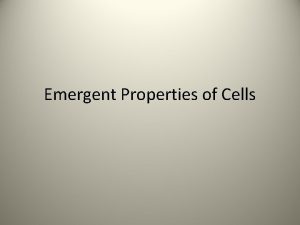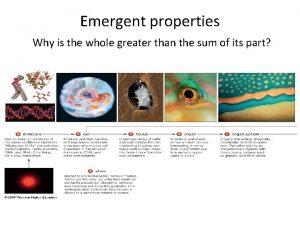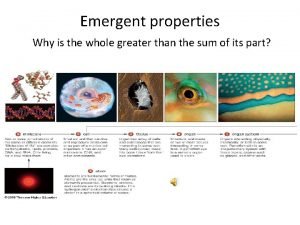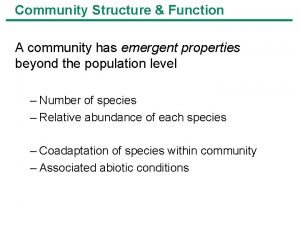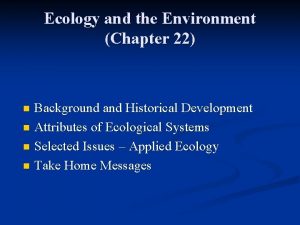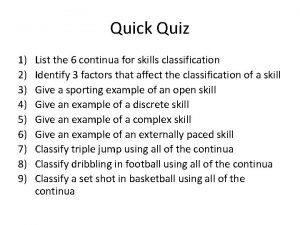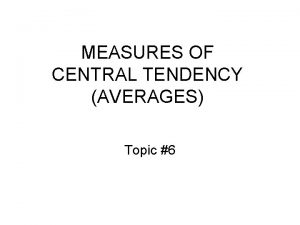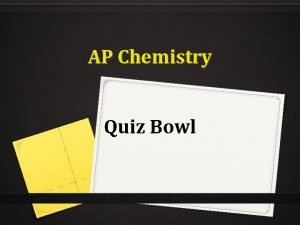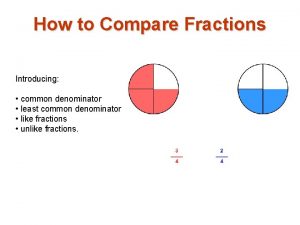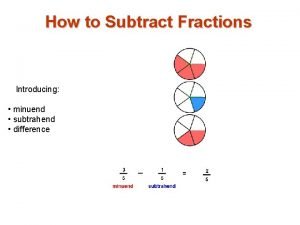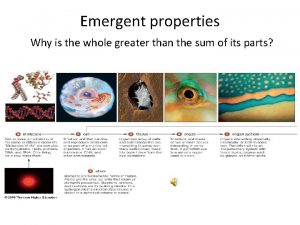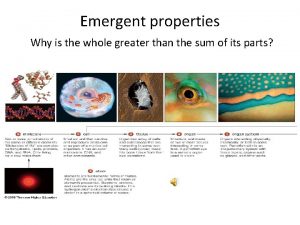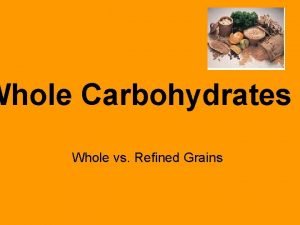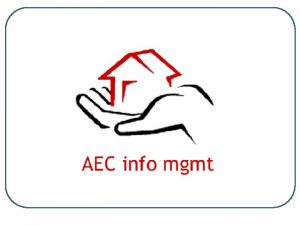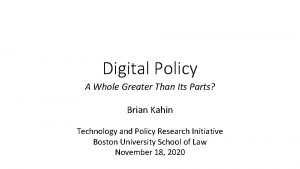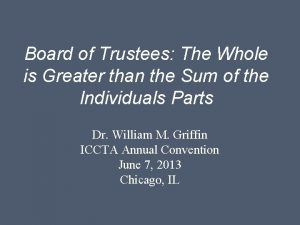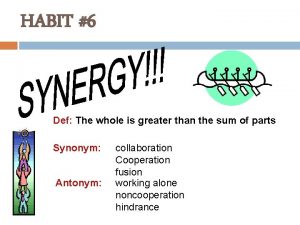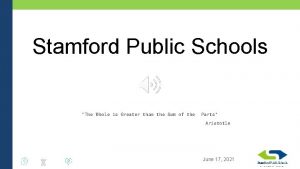Emergent properties Why is the whole greater than

























- Slides: 25

Emergent properties Why is the whole greater than the sum of its part?

Emergent properties: From elements to an ionic molecule • Common table salt • Chemical formula is Na. Cl • Or salt is one atom of Na+ and one of Cl-

Physical properties of Na+ and Cl. Na+ at • Properties of room temperature • Properties of Cl- at room temperature – Solid – Gas, dimer Cl 2 – Molecular weight: 23 – Molecular weight: 35 – Melting point: +98°C – Melting point: -101°C – Boiling point: +883°C -34°C

Emergent Properties of Na. Cl • Properties of sodium chloride • Molecular weight: 58 (predictable) • Melting point: +800°C • Boiling point: +1465°C • Na. Cl will be a solid at room temperature • Only the molecular weight was predictable from the physical properties of Na+ and Cl-.

What are the emergent properties that add up to the basics for a protocell? • Atoms formed • Atoms combined to make precursor molecules • Precursors form into macromolecules (i. e. RNA) and/or structures (i. e. membranes) • Primitive RNAs develop replicase and catalytic activities • Protocells form by primitive membranes enclosing RNAs and other macromolecules

Emergence is a Property of Living and Nonliving Systems • Emergence of order & self organization in non-living systems & living systems are similar • Both depend on energy flows that maintain the systems far from thermodynamic equilibrium • Emergence of self-organized chemical systems at some critical density of organic molecules & intermediate levels of energy may have laid foundation for the origin of life • So understanding emergence in simple systems may provide clues to how lifeless molecules led to living cells

Video: Emergence

Emergent Properties - Nonliving Systems Belousov-Zhabotinsky reaction

Emergence in Non-living Systems • Why do ripples emerge in sand? i. e. what’s the mechanism? § Critical mass of interacting sand particles Number of Particles § Constant intermediate energy input (currents, wind) Energy Input

Emergence in Non-living Systems • Self-organized, emergent phenomena seem to defy the Second Law of Thermodynamics which states that inevitably everything in the universe becomes less ordered. • “In a system, a process can occur only if it increases the total entropy of the universe. Energy transformations involved in the processes (i. e. doing work) are never 100% efficient. Some energy is always lost as heat. ” • Entropy is a measure of a system’s degree of organization: § Highly ordered systems have low entropy § Disorganized systems have high entropy. • Examples?

Entropy Driven Reactions • If a reaction is spontaneous due to a large positive increase in entropy it’s said to be entropy driven • Protein folding & formation of lipid bilayers are spontaneous and entropy driven • Both result in decreased entropy of solute but increased entropy of water (the solvent) • They are spontaneous processes

Emergent Properties - Living Systems The giant hill or the school of fish shown here are visible patterns that are generated by the individual actions of organisms and cannot be said in themselves to be the purpose of any individual. A map of protein interactions or food relationships in the environment is an abstract and complex result of biological phenomena, quite incidental to the phenomena themselves.

Living Systems • • One of most important books in biology • Life could be understood in terms of laws of physics & chemistry • Pointed out life did not violate the 2 nd law of thermodynamics • To maintain itself & escape the inevitable dissolution demanded by the 2 nd law, life constantly takes in energy from environment • “Living matter evades decay to thermodynamic equilibrium by having a metabolism. ” Laid foundations for molecular biology & understanding of DNA and the gene

Life is an emergent property because a. life came into existence in a random process from the non-living some 3. 8 billion years ago. b. vital or spiritual forces make living entities different from rocks, clouds, and other inanimate things. c. life’s fundamental capacities of metabolism and reproduction are possible because of the way component parts like molecules are arranged and interact. d. DNA has all the necessary information for life to occur.

Life as an Emergent Property • Life is the ultimate emergent property • Life arose as inexorable sequence of emergent events, each the inevitable consequence of interactions amongst carbon-based molecules • Universe may be organized such that life spontaneously emerges given appropriate conditions & sufficient time

What is Life?

Life in a Test Tube • 2002 – Complete functioning virus created from commercially available ingredients • Synthesized 5386 base DNA chain in test tube • 2003 – Venter predicts “First “living” cell will be synthesized within 5 years. ”

Definition of Life? • “Localized molecular assemblages that regenerate, replicate, and build new functionality through evolution. ” • “Transition to life arises when heritable information takes control of thermodynamic self-assembly, energy transduction, and replication. ” • “Living organisms are open systems that are far from thermodynamic equilibrium. They depend on a constant inflow of energy which they utilize to sustain themselves and make copies of themselves using hereditary information stored in DNA. All living organisms are subject to natural selection and hence evolve and change over time. ”

• Simplest known bacteria: v Carsonella ruddii v 182 genes 159, 662 base-pairs) v obligate endosymbionts with aphids

Are Viruses Alive? A. Yes B. No C. Uncertain

Viruses are simple biological forms. Are they alive?

In-Class Assignment • Your job is to assess whether or not a virus is alive (you can consult with your neighbor). • To conduct your analysis you will first need to develop a list of 3 of the most important defining characteristics of life. • Apply your list to viruses and come up with a defense of whether you think viruses are alive or not. Write out your analysis on the handout and turn it in at the end of class for credit.

Are Viruses Alive? A. Yes B. No Clicker question

Criteria for Life? • “Localized molecular assemblages that regenerate, replicate, and build new functionality through evolution. ” • “Transition to life arises when heritable information takes control of thermodynamic self-assembly, energy transduction, and replication. ” • All life forms are membrane-bound to control movement of substances into and out of the cell

Creating life ?
 Cdc whole school whole community whole child
Cdc whole school whole community whole child Emergent properties
Emergent properties Percents greater than 100 and less than 1
Percents greater than 100 and less than 1 Fractions greater less than or equal to
Fractions greater less than or equal to Keywords for inequalities
Keywords for inequalities Odd one out maths
Odd one out maths Numberblocks 10
Numberblocks 10 Compound inequality examples
Compound inequality examples Greater than god more evil than the devil
Greater than god more evil than the devil Why why why why
Why why why why Emergent properties biology
Emergent properties biology Socio technical system in software engineering
Socio technical system in software engineering Emergent properties biology examples
Emergent properties biology examples Functions of community
Functions of community Emergent properties
Emergent properties Massed practice
Massed practice Premature adrenarche
Premature adrenarche Monopoly atc curve
Monopoly atc curve Mean higher than median
Mean higher than median Which fraction is greater than 1/2
Which fraction is greater than 1/2 Hypothesis
Hypothesis How does monopoly arise?
How does monopoly arise? Delta g greater than 0
Delta g greater than 0 3/4 vs 5/8
3/4 vs 5/8 Greater love has no man than this
Greater love has no man than this Subtrahend
Subtrahend

